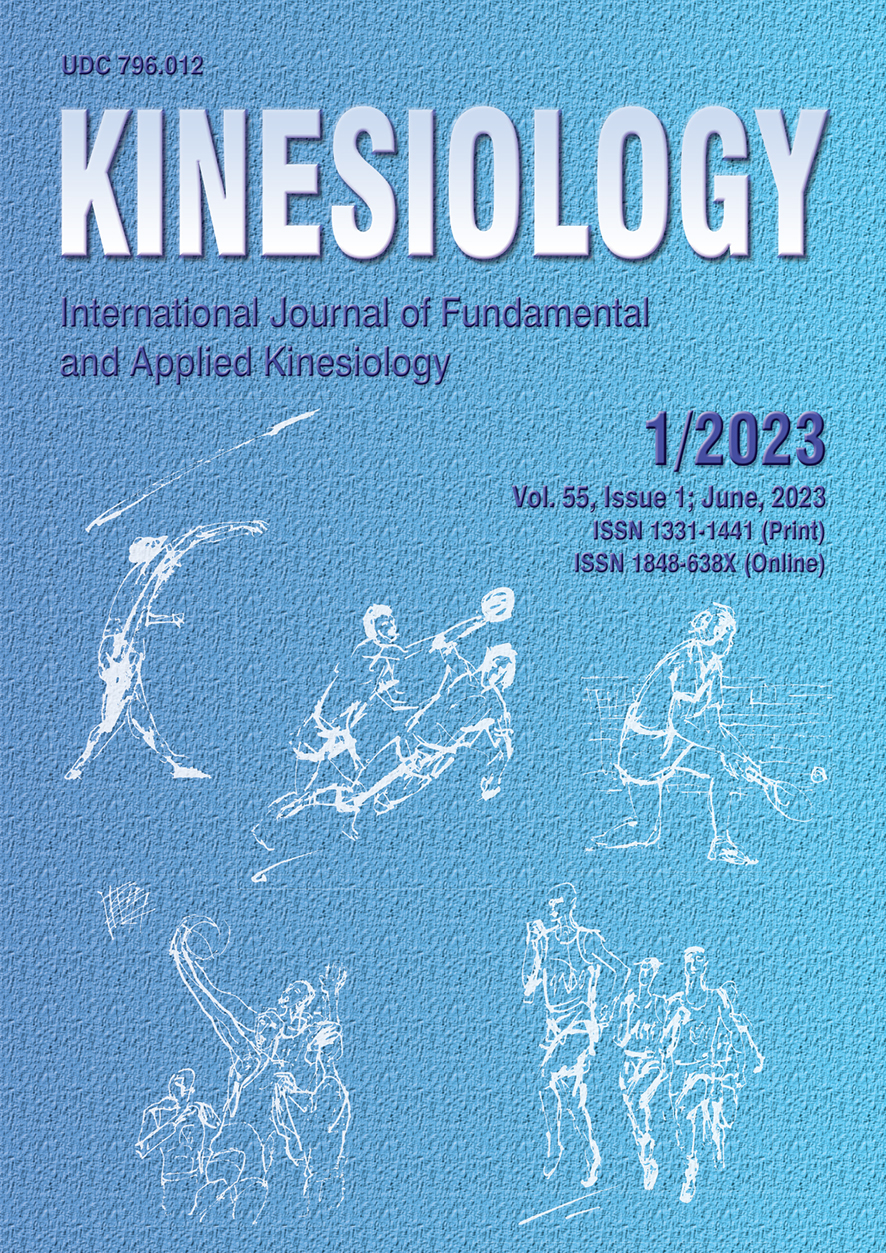200M BREASTSTROKE POST-COMPETITION BLOOD LACTATE REMOVAL CHARACTERISTICS: A CASE STUDY OF AN INTERNATIONAL FEMALE SWIMMER—AN EXAMPLE OF INDIVIDUAL MODELING IN RELATION TO POOL LENGTH
Keywords:
swimming, adaptation, modeling, training controlAbstract
The goal of this study was to define the individual model characteristics of lactic acid removal after 200m breaststroke competitive load in a female swimmer in relation to different pool lengths (25m vs. 50m). The second goal was methodological and referred to the presentation of newly applied metrological procedures for the Individual Lactate Recovery Profile modeling. Six races from the competitive season 2021/22 were selected, in which the athlete achieved the most valuable results in relation to the FINA score. To establish the metabolic response of the organism to the competition effort, the method of determining the level of lactate concentration in capillary blood (La in mmol/L) was used. Differences between the mean values of variables were established using ANOVA. The polynomial curve equation function was used to create a blood lactate concentration in a function of recovery time model (La-trecovery). The ANOVA showed that there was no statistically significant difference between the monitored variables and the pool length function (p=.097). The maximum achieved blood lactate concentration in the acute race recovery phase was 13.17 ± 2.81 and 12.08 ± 1.80 mmol/L and the given concentration initially occurred in the time of 240.0 ± 85.6 s and 169.3 ± 79.9 s in the 25 and 50m pool, respectively. In relation to the time of complete passive recovery required to establish acidosis at the level of 2 mmol/L (25 and 50m pool) occurred in 1191.7 ± 481.3 s and 1326.7 ± 405.1 s, while the full index of intensity of blood lactate clearance was 135.7 ± 60.7 s/mmol/L and 124.0 ± 60.7 s/mmol/L for 25m and 50m pool, respectively, although no statistically significant difference was found between the parameters of recovery in relation to pool length. The offered mathematical models enabled a practical individual approach to controlling the specific adaptation to training for achieving a higher competitive level performance.
Key words: swimming, adaptation, modeling, training control
Downloads
Published
How to Cite
Issue
Section
License

This work is licensed under a Creative Commons Attribution-NonCommercial 4.0 International License.
At Faculty of Kinesiology we recognize that access to quality research is vital to the scientific community and beyond. Kinesiology is non-profit journal and all costs of publishing and peer review process are covered by the publisher itself or other funding sources like Ministry of Science and Education of the Republic of Croatia. Full text papers are also available free of charge at http://hrcak.srce.hr/kineziologija. There are no restrictions on self archiving of any form of paper (preprint, postprint and publisher's version).
Articles are distributed under the terms of the CC BY - NC 4.0
Kinesiology does not charge any fees to authors to submit or publish articles in our journal.


